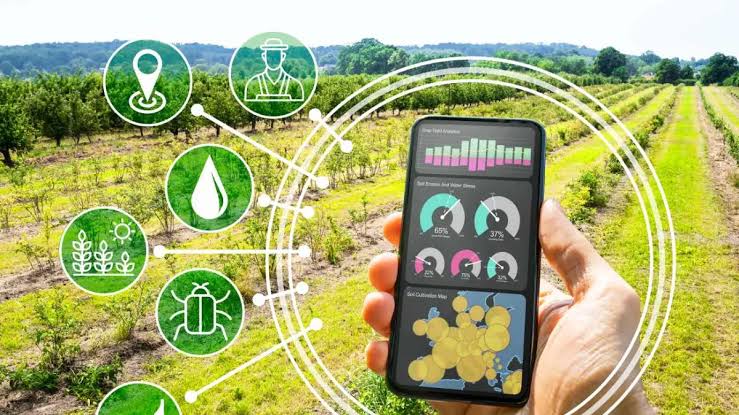This comprehensive exploration of Agricultural Computer Vision underscores its transformative potential in modern agriculture, emphasizing its role in enhancing productivity, sustainability, and resilience in farming practices worldwide.
In recent years Agricultural Computer Vision has emerged as transformative technology in modern farming practices. It is revolutionizing how farmers monitor and analyze crop health and yield. This innovative approach leverages advanced imaging techniques and artificial intelligence (AI) algorithms. It provides real-time insights into plant conditions, disease detection and productivity. Thus it enhances crop management strategies and optimizes agricultural outcomes.
Introduction to Agricultural Computer Vision
Agricultural Computer Vision integrates sophisticated imaging technologies with AI-powered analytics. It monitors crops with unprecedented precision and efficiency. Unlike traditional methods that rely on manual inspection or satellite imagery, computer vision systems can analyze high-resolution images captured by drones. They can also analyze images from satellites or ground-based sensors. These images are then processed using AI algorithms capable of detecting subtle changes in plant health identifying diseases, assessing growth patterns and predicting yield potential.
Monitoring Crop Health
One of the primary applications of Agricultural Computer Vision is monitoring crop health throughout the growing season. By analyzing visual data captured from various vantage points, including aerial and ground-based platforms, farmers can detect early signs of stress, nutrient deficiencies, or pest infestations. Computer vision algorithms can distinguish between healthy and diseased plants based on color variations, leaf texture, and structural anomalies, enabling proactive interventions to mitigate risks and optimize crop yields.
Analyzing Growth Patterns
Computer vision technology enables farmers to analyze growth patterns and development stages across entire fields or individual plants. Through image-based analysis, algorithms can track plant growth metrics such as height, leaf area index, and canopy density over time. This data allows farmers to make data-driven decisions regarding irrigation schedules, fertilizer application rates, and crop rotation strategies, tailored to the specific needs of each crop and field condition.
Disease Detection and Management
Early detection of diseases is critical for preventing crop losses and minimizing the use of chemical treatments. Agricultural Computer Vision excels in identifying symptoms of diseases such as leaf spots, fungal infections, or viral outbreaks by analyzing subtle changes in plant morphology and coloration. Machine learning algorithms trained on extensive datasets can classify and diagnose diseases accurately, providing timely recommendations for targeted interventions, including precision spraying or quarantine measures.
Optimizing Yield Predictions
Accurate yield predictions are essential for crop planning, resource allocation, and market forecasting. By integrating computer vision with data analytics, farmers can predict yield potential based on factors such as plant health metrics, weather conditions, soil quality, and historical yield data. AI models can analyze complex relationships within these datasets to generate predictive models that enhance decision-making and optimize harvest strategies, ensuring optimal productivity and profitability.
Challenges and Limitations
Despite its promising benefits, Agricultural Computer Vision faces several challenges. The complexity of interpreting diverse environmental conditions, variability in image quality, and the need for robust algorithms capable of processing large datasets in real-time are significant hurdles. Moreover, ensuring the privacy and security of farm-level data collected through imaging systems remains a priority, requiring robust data management protocols and regulatory compliance.
Integration with Precision Agriculture
Agricultural Computer Vision is a cornerstone of precision agriculture, which aims to maximize efficiency and sustainability in farming practices. By integrating computer vision insights with precision agriculture technologies such as GPS-guided machinery, variable rate application systems, and IoT sensors, farmers can implement site-specific management practices. This integration optimizes resource use, reduces environmental impact, and enhances overall farm profitability by aligning inputs with crop needs and environmental conditions.
Future Directions and Innovations
Looking ahead, the future of Agricultural Computer Vision holds promise for further advancements and innovations. Emerging technologies such as hyperspectral imaging, 3D scanning, and multispectral analysis will enhance the granularity and accuracy of crop assessments. Additionally, advancements in AI algorithms, including deep learning and neural networks, will enable more sophisticated image recognition and predictive modeling capabilities. These developments will empower farmers with actionable insights and decision-support tools to navigate challenges such as climate variability, resource constraints, and market dynamics effectively.
Conclusion
Agricultural Computer Vision represents a paradigm shift in modern agriculture, offering farmers unprecedented capabilities to monitor, analyze, and optimize crop health and yield. By harnessing the power of imaging technologies and AI-driven analytics, farmers can make informed decisions that enhance productivity, sustainability, and resilience in the face of evolving challenges. As the technology continues to evolve and integrate with other precision agriculture tools, its transformative impact on global food security and agricultural sustainability is poised to grow, ushering in a new era of data-driven farming practices.
